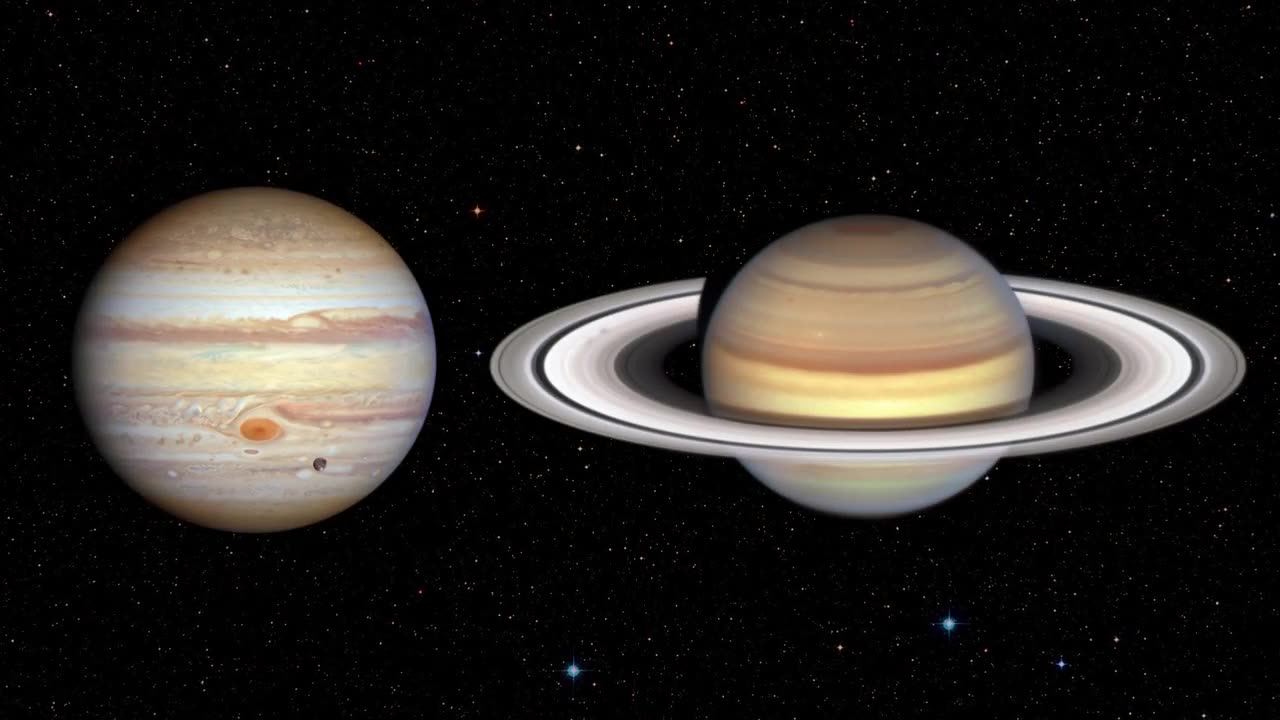Premium Only Content

Sky Watching Tips By Nasa.
Full Moon at the Start of the Month: The month kicks off with a stunning full moon illuminating the night sky. It's a breathtaking sight as the moon's entire face is visible, casting a gentle glow that brightens up the darkness.
Jupiter and Saturn as Early Birds and Night Owls: Jupiter and Saturn will be visible during both early evening and late-night hours. Look towards the eastern horizon in the evening, and you'll catch a glimpse of Jupiter and Saturn rising. As the night progresses, they'll move higher in the sky, offering a captivating view for stargazers.
Venus and Mars Low in the West: Venus and Mars will be seen low on the western horizon. Venus, often referred to as the "Evening Star," shines brilliantly and is easy to spot shortly after sunset. Mars, with its distinct reddish hue, will also be visible nearby, creating a beautiful contrast in the evening twilight.
Saturn Rising High in the Southern Sky: As the night advances, Saturn will make its way higher in the southern part of the sky. Its golden glow adds a touch of majesty to the celestial display. This is a great opportunity for observers to use telescopes and capture Saturn's iconic rings.
Consider using these hashtags to engage your subscribers:
#CelestialSpectacle
#StargazingAdventures
#FullMoonMagic
#PlanetaryParade
#NightSkyWonders
#JupiterSaturnDuo
#NASA
#Skywatching
-
 LIVE
LIVE
Badlands Media
11 hours agoDevolution Power Hour Ep. 400
5,995 watching -
 2:05:10
2:05:10
Inverted World Live
4 hours agoHypersonic UFO Over Minneapolis | Ep. 128
59.8K8 -
 2:50:41
2:50:41
TimcastIRL
5 hours agoDemocrat Press IS DEAD, Timcast JOINS Pentagon Press Corps Sparking OUTRAGE | Timcast IRL
212K80 -
 1:32:24
1:32:24
Tucker Carlson
4 hours agoTucker and MTG on the 5 Pillars of MAGA and the Snakes in Washington Trying to Tear Them Down
41.3K130 -
 LIVE
LIVE
Side Scrollers Podcast
3 days ago🔴FIRST EVER RUMBLE SUB-A-THON🔴DAY 3🔴PLAYING MIKE TYSON'S PUNCH OUT TILL I WIN!
969 watching -
 17:14
17:14
Mrgunsngear
5 hours ago $8.72 earnedUpdate: Current Glocks Discontinued & Glock V Series Is Coming!
21.9K25 -
 2:52:54
2:52:54
Barry Cunningham
5 hours agoMUST SEE: PRESIDENT TRUMP NATO PRESSER! AND NEW YORK CITY MAYORAL DEBATE!
46.9K42 -
 13:15
13:15
Cash Jordan
8 hours ago"INVASION" Mob STRIKES Chicago Jail… FRONTLINE Marines IGNORE Judge, SMASH Illegals
28.3K36 -
 DVR
DVR
SpartakusLIVE
5 hours ago#1 Solo Challenge CHAMPION entertains HERDS of NERDS
21.5K -
 LIVE
LIVE
Alex Zedra
3 hours agoLIVE! New Game | DeathWatchers
295 watching